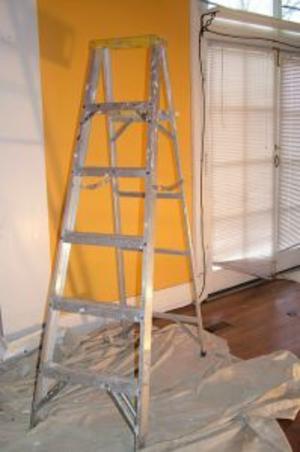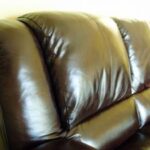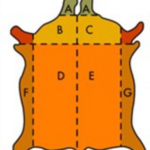It is so easy to give your interior walls a coat of fresh paint without spending a lot of money. It is also just as easy to give them a beautiful faux finish, too. A colorwash is one of the simplest faux finishes that yields a soft stylish look. If you use the right color choices, the colorwash can even look similar to a faux leather look. One of the wonderful benefits of using a colorwash faux finish on your walls instead of wallpapering them is you can easily change them when you tire of the look.
Creating a stylish faux finish doesn’t have to be a big elaborate deal with layers and layers of paint, especially a simple colorwash. When I began doing interior faux finishes several years ago, I did a lot of reading on the subject. I just wasn’t impressed with how difficult the process seemed. Most of the books I read insisted that oil paints and glazes were the only way to do a faux finish. I just don’t find that to be true these days, unless the situation is extremely unique. Oils paints also smell terrible and require mineral spirits or turpentine for brush cleaning.
There are so many user-friendly water-based glazes available today to do a faux finish. These make a decorative paint treatment such as a colorwash so easy. They are also less costly and only require soap and water clean up. The clear glazes can be mixed with any latex paint of your choice. It makes the paint drying time longer which gives the painter more time to manipulate it on the wall. The drying time is not as long as oil paints, but it still changes the ordinary interior latex paint to something extraordinary. The glazes also come in premixed colors. They are also glazes available in metallic finishes of copper, gold, silver and bronze. They are more expensive in premixed colors but a little glaze goes a long way.
The number of coats of paints and/or glazes you want to put on your walls are really up to you and the type of look you want to create. A really beautiful colorwash can be achieved with only one coat of paint followed by one coat of glaze. If your walls have been painted recently, you can skip the first step and just colorwash over them. The most important thing to remember when using a colorwash glaze is the surface the glaze is going on must be consistent and clean. Glazes are translucent and will not give coverage like a coat of paint. A colorwash will not give the same effect on a portion of drywall that has been spackled or patched in any way. When in doubt, it’s best to give the room a fresh coat of paint after spackling and using any necessary primer to hide stains, crayons, etc. The look of the colorwash glaze will also depend on whether you use flat latex paint or semi-gloss latex paint. I recommend using an eggshell finish paint for the base.
Whatever color you choose for your base coat, I recommend getting a quart of paint at least two to three shades darker than your base color to mix your top colorwash glaze coat. This depends on your preference of contrast between the two colors. A light beige base coat with a darker rusty-brown colorwash glaze will give a beautiful sable look. You will mix one part of the darker paint with three parts of clear glaze. I just usually buy my paint and glaze at Lowe’s or The Home Depot. They have great paint for the price. They also carry glazing liquids for faux finishes in different brands. The brand is not important, but be certain to get a clear glazing liquid and little plastic paint buckets with sealable tops is a great help. They will also keep your freshly mixed custom glaze from drying out. You will also need a bag of painters rags or any soft lint-free rags.
The “how to” books I talked about earlier usually suggest expensive specialty brushes to do a colorwash technique. I’ve used one of those brushes and actually do not like that look as well. A less harsh alternative is to really “wash” on the color with painters rags. I happen to prefer this look because it is much softer and doesn’t have the heavy marks of crosshatching with a brush. It is so easy and forgiving and does not to be completed in one day as with many faux finishes nor does it require two people. The thing it does require is elbow grease and a lot of it. Other than that, it is so simple.
Wet the painter’s rag with water and ring it out until it’s barely damp. Make the rag into a comfortable flattened “wad.” Dip one side of the rag in the glaze mixture and just pretend you are scrubbing the walls in a circular motion. It will take a few times to get your look the way you like it and to do your circular scrubbing consistently. I always start somewhere on the wall where I can practice a little, such as behind a large piece of furniture. I also always keep plenty of wet rags near for corrections. The great thing about mixing glazes with latex or using premixed glazes is the extra dry time. You can glaze a small area and wipe it off with a wet rag and try again until you get the technique you want. Each time you reload the rag with glaze, start your circular motions on new section beside where you left off, and then work the glaze back into the portion already glazed to even it out. If you don’t do it this way, you will end up with areas much heavier in glaze. Of course, the look you are after is to be mottled and cloudy, so there really is no such thing as a mistake. The worst that can happen is going back over areas that appear to be much lighter in glaze than others and just blending and blending some more! The end result is a rich custom look for your walls that you can be proud of!





